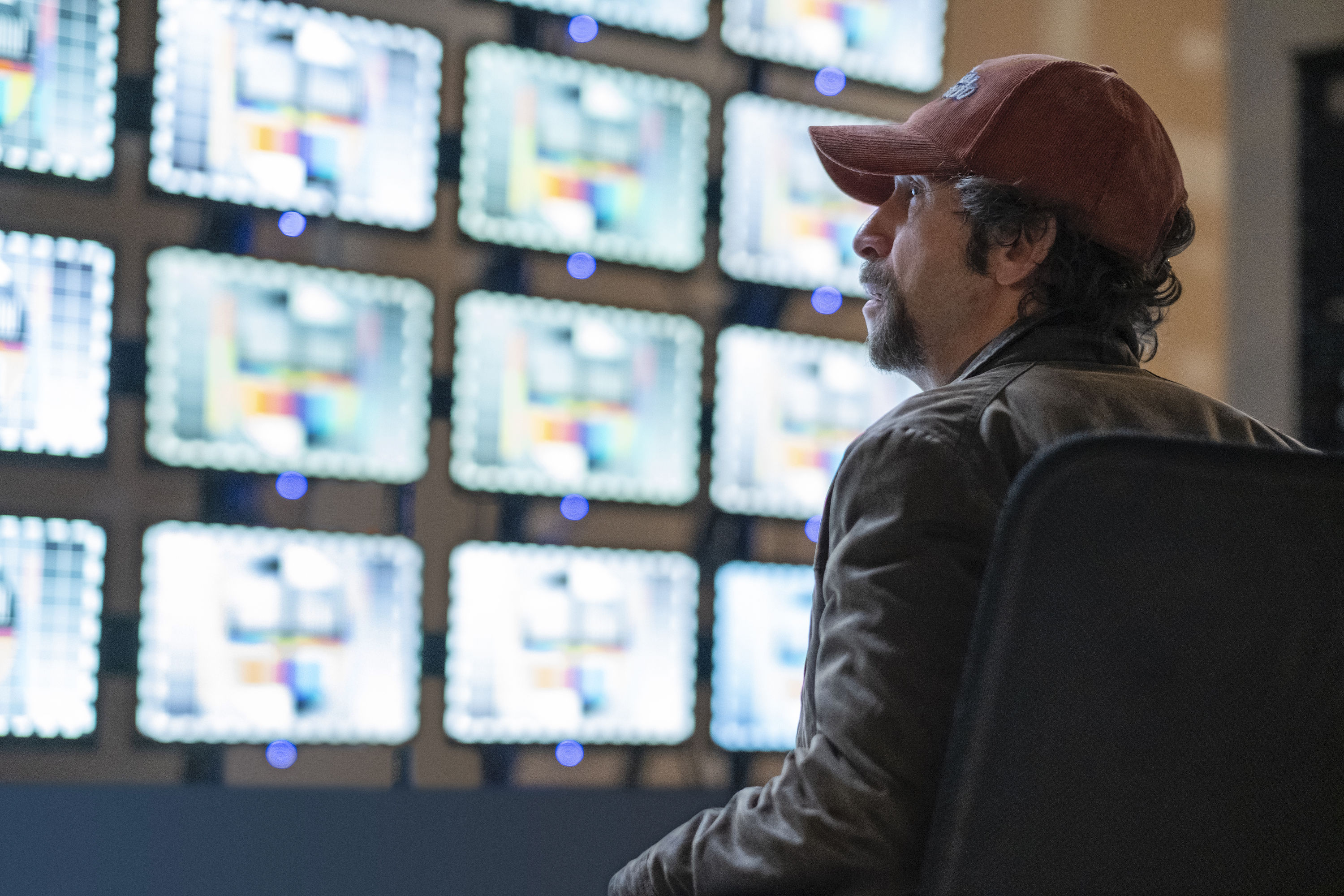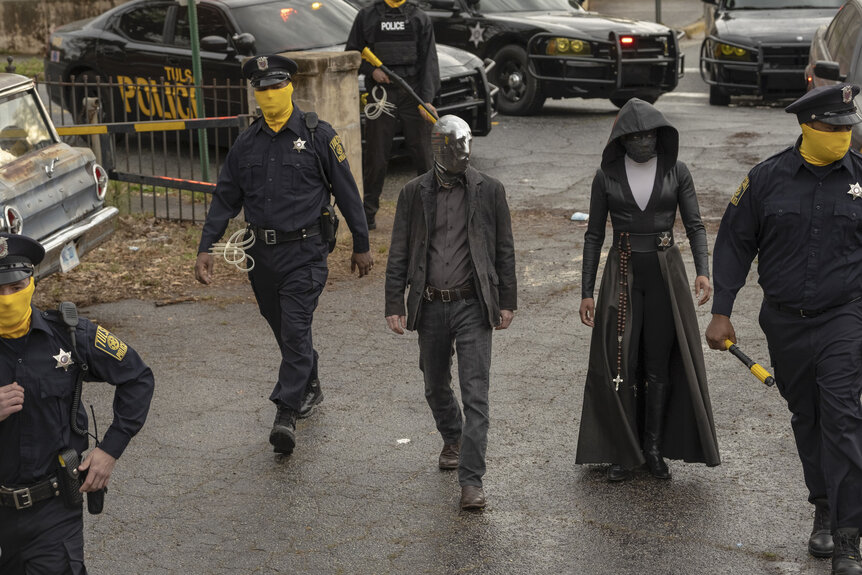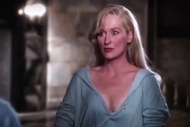Create a free profile to get unlimited access to exclusive videos, sweepstakes, and more!
HBO's Watchmen series works because it is deeply, unflinchingly American

The new Watchmen’s success isn’t in adapting what is considered by most to be an “unfilmable” story, but in how much it sidesteps the source material. HBO's adaptation takes what it needs and leaves the rest. In place of the original story, which was a deconstruction of the comics genre, Damon Lindelof is doing a different sort of deconstruction, turning author Alan Moore’s work into a show that explores the history of America, religion, and race.
The Watchmen comic was considered groundbreaking when it arrived in 1986. It created — or at least popularized — the concept of the graphic novel with the now-ubiquitous proto-grimdark atmosphere, political commentary, and sex and violence. But it was a peculiar success. For all that it was a superhero story set in New York City, it was neither about superheroes nor all that American. Both Moore and illustrator David Gibbons were British, and Moore’s themes were railing against British politics, the rise of Thatcherism and fascism, and Cold War-induced terror.
It may be hard to remember now, but before Mikhail Gorbachev took power of the Soviet Union in March 1985 and began making overtures that eased the Cold War in the wake of the Chernobyl disaster, nuclear war felt imminent. The twin elections of Thatcher and Reagan, both viewed as war hawks, upped the ante, with the so-called “Doomsday Clock” positioned at three minutes to midnight in 1984. Thatcher’s attempts at dismantling the social safety nets in the U.K. created a sense of impending collapse — and a sense that the needs of the people were losing out in favor of what the state claimed was “the greater good.”
When viewed through this lens, the original Watchmen’s obsession with clocks, how many “minutes to midnight” it is, and Ozymandias’ choice to kill millions to save billions (and the willingness of his fellow superheroes to cover it up) snaps into focus.
But in 2019, much of that has faded from public view. The Doomsday Clock is worse now than it was then, but it’s based on environmental disasters, not nuclear war. The 2020 election is bringing about discussions of expanding the safety net, and Trump’s efforts to retract it, at least Obamacare, failed spectacularly. Given the current political climate, one cannot pick the original Watchmen story up and transfer it wholesale to any screen and have it still feel relevant. (Sorry, Zack Snyder.)
Faced with this reality, Lindelof created what he referred to as “a very expensive piece of fanfiction” when the first episode premiered at New York Comic Con. The heart of Watchmen’s conceit remains: Superheroes coming into the real world would change history, and not for the better. But to change history, one must first understand it. And to understand American history is to dive into the complicated and often ugly racist episodes our society would rather forget happened.
New York may seem like the heart of America from across the pond, but those who live here know how “the Midwest” is fetishized as “real America.” To that end, Lindelof transfers all the action to Tulsa, Oklahoma, a state that sits in the center of the country, just south of Kansas. It didn’t become a state until 1907, skipping the Civil War, so it cannot be pigeonholed as a slave state or “the Confederacy,” giving it a supposed pass on historical racism. When Rogers & Hammerstein wanted to write a musical glorifying our Manifest Destiny, they picked Oklahoma.
And yet, this state’s history of racism is filled with blood, from the Native Americans tribes slaughtered to take the land, to the African Americans butchered in the Tulsa massacre, as recreated in the series' cold open. (The premiere also notably uses the Oklahoma musical as one of its recurring motifs.) It is a perfect place to explore how reparations would work (as well as how they’d go over in white America) and a new vision of the KKK, the 7th Kalvary. The Greenwood Cultural Center, which is a real African American history museum, is refashioned into a place to collect reparations, as well as the site where our heroine, Sister Night, returns to learn of her hidden history.
But it’s Episode 5, “Little Fear of Lightning,” where all the threads of the American experience come together. Sister Night’s coworker Wade Tillman, known as “Looking Glass,” is revealed to have grown up in a deeply religious, evangelical community, the type that goes to “the big city” to try to “save souls” who don’t live in “real America.” But his mission trip to Hoboken, New Jersey, as a teenager occurred on “11/2,” the day the squidlike “alien monster” fell on New York City with a resulting psychic blast that killed millions in the tri-state area. (The way the show talks about “11/2” in the same way we talk about “9/11,” another American event, is apparent as well.) He is one of the only survivors, saved by being inside a funhouse of mirrors.
The events on “11/2” shattered Tillman’s faith, but it also makes him the perfect target for the 7th Kalvary to aim for in bringing in a new member. Reveal the hoax that took people like him and murdered them for “the greater good,” and see how fast he’ll turn. Tillman may spend his time scanning for racists, but even he knows the score. He is, in his own words, “a white man in Oklahoma.”
But the 7th Kalvary fails in their mission. Tillman chooses to hold on to the rituals he knows, rescuing his “extra-dimensional alarm system” from the garbage, rather than throw out his whole life just because the Squid was “fake news.” In that, Watchmen’s 2019 America is no different than this one.
Lindelof’s series is HBO’s biggest hit since 2016’s Westworld, an extraordinarily unlikely outcome for what is sometimes an inscrutable adaptation for those who never read the comics. But in grounding this new story in America’s historical truths, it puts a fascinating spin on the familiar themes. By making this Watchmen distinctly American, the alternate reality feels far more grounded in the "what could be" than a straight adaptation would have managed.
The views and opinions expressed in this article are the author's and do not necessarily reflect those of SYFY WIRE, SYFY, or NBCUniversal.















